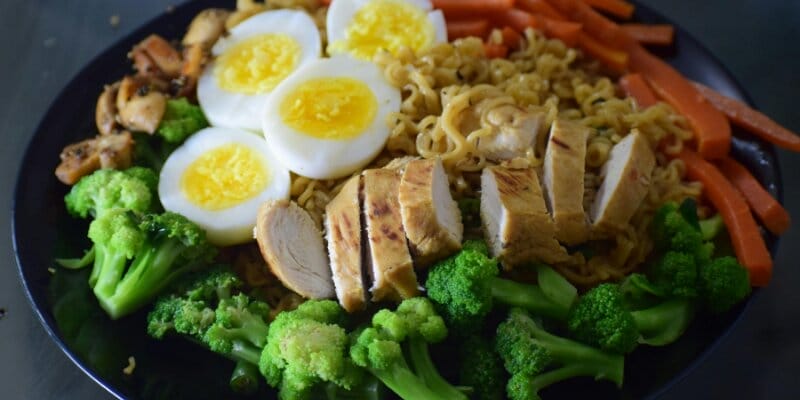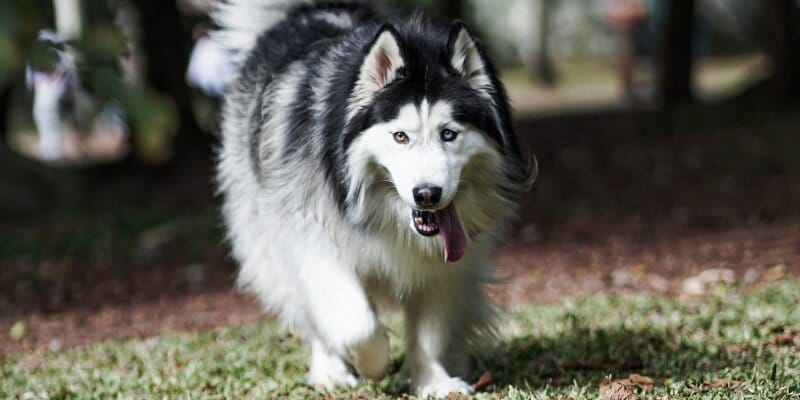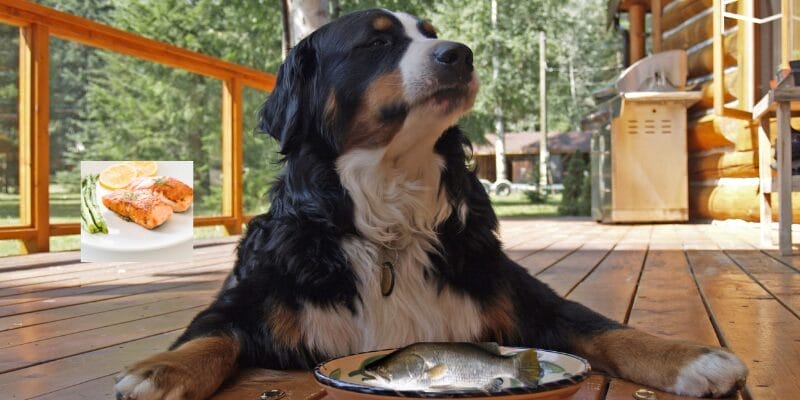6 Grain Free Homemade Dog Food Recipe

Secrets of Grain Free Homemade Dog Food
In this blog post, we’ll explore the benefits of grain free homemade dog food and share some simple and delicious recipes to keep your dogs healthy and happy. Grains, such as wheat, corn, and soy, are common ingredients in commercial dog food. While they serve as inexpensive fillers, some dogs may have sensitivities or allergies to grains, leading to various health issues. Grain free dog food has gained popularity as a solution to these concerns, promoting better digestion and overall well being in our dogs.
Benefits of Grain Free Homemade Dog Food:
Improved Digestion:
Dogs, like humans, can benefit from a diet rich in whole foods. Grain free homemade dog food recipes often include high-quality protein sources and easily digestible vegetables, promoting a healthy digestive system.
Weight Management:
Grain free diets can assist in weight management for dogs prone to obesity. These recipes often focus on lean proteins and healthy fats to maintain an optimal weight.
Allergy Relief:
If your dog has allergies or sensitivities, switching to grain free homemade dog food can help alleviate symptoms. Common allergens like wheat and corn are eliminated, reducing the likelihood of adverse reactions.
Increased Energy Levels:
A nutrient dense diet can contribute to increased energy levels and overall vitality in your dog. Quality proteins and fats provide the necessary fuel for an active and happy lifestyle.
How to Make Healthy, Homemade Dog Food with Beef (High-Protein & Grain-Free)
Creating healthy, homemade dog food with beef is a rewarding endeavor that ensures your dogs gets the nutrition they deserve. Packed with high quality protein, this grain free homemade dog food recipe promotes your dog’s overall well being. Start by selecting lean ground beef as the primary protein source, cooking it thoroughly to retain essential nutrients. Incorporate a variety of vegetables like carrots and peas, providing essential vitamins and minerals. To make it grain free, skip traditional grains and consider alternatives like sweet potatoes or quinoa.
A dash of fish oil or olive oil can add healthy fats to support your dog’s coat and skin. Experimenting with these simple ingredients allows you to tailor the recipe to your dog’s taste preferences and dietary needs. Remember, consulting with your veterinarian ensures that the homemade beef-based, high-protein, grain-free dog food meets your friend’s specific requirements, promoting a healthy and happy life.
Easy Grain Free Homemade Dog Food Recipes:
Turkey and Sweet Potato Delight:
Ingredients:
- Ground turkey
- Sweet potatoes
- Carrots
- Peas
- Olive oil
Instructions:
- Cook the ground turkey in a pan.
- Steam or boil sweet potatoes, carrots, and peas.
- Mix all ingredients together with a dash of olive oil.
Salmon and Spinach Feast:
Ingredients:
- Salmon fillets
- Spinach
- Quinoa
- Blueberries
- Coconut oil
Instructions:
- Bake or grill salmon fillets.
- Cook quinoa according to package instructions.
- Combine cooked salmon, quinoa, chopped spinach, and blueberries. Drizzle with coconut oil.
Beef and Pumpkin Medley:
Ingredients:
- Lean ground beef
- Pumpkin puree
- Green beans
- Brown rice
- Flaxseed oil
Instructions:
- Brown the ground beef in a skillet.
- Steam green beans.
- Mix beef, pumpkin puree, green beans, and cooked brown rice. Add a splash of flaxseed oil.
Grain Free Chicken Homemade Dog Food Recipe
Ingredients:
- 2 cups boneless, skinless chicken breasts (cooked and shredded)
- 1 cup sweet potatoes (cooked and mashed)
- 1/2 cup green beans (steamed and chopped)
- 1/4 cup blueberries (fresh or frozen)
- 1 tablespoon coconut oil
Instructions:
- Prepare the Chicken:
- Cook the boneless, skinless chicken breasts thoroughly. You can boil, bake, or grill them. Once cooked, shred the chicken into bite-sized pieces.
- Cook the Sweet Potatoes:
- Peel and dice the sweet potatoes, then cook until tender. Mash the cooked sweet potatoes until smooth.
- Steam and Chop the Green Beans:
- Steam the green beans until they are tender but still crisp. Chop them into small, manageable pieces for your dog.
- Add Blueberries:
- Incorporate the blueberries into the mix. Blueberries provide antioxidants and a burst of flavor. You can use fresh or frozen blueberries.
- Include Coconut Oil:
- Drizzle a tablespoon of coconut oil into the mixture. Coconut oil adds healthy fats to support your dog’s coat and skin.
- Combine and Mix:
- In a large mixing bowl, combine the shredded chicken, mashed sweet potatoes, chopped green beans, blueberries, and coconut oil. Mix thoroughly to ensure an even distribution of ingredients.
- Serve and Store:
- Serve a portion of the grain-free chicken homemade dog food to your friend. Store the remaining portions in airtight containers in the refrigerator for up to three days or freeze for longer shelf life.

Grain Free Homemade Dog Treats Recipe:
Ingredients:
- 1 cup coconut flour
- 1/2 cup peanut butter (make sure it’s xylitol-free, as xylitol is toxic to dogs)
- 2 ripe bananas, mashed
- 2 eggs
- 1/4 cup coconut oil, melted
- Optional: a handful of blueberries or diced apple for added flavor
Instructions:
- Preheat the Oven:
- Preheat your oven to 350°F (175°C) and line a baking sheet with parchment paper.
- Mix Wet Ingredients:
- In a large bowl, combine the mashed bananas, peanut butter, eggs, and melted coconut oil. Mix until well combined.
- Add Dry Ingredients:
- Gradually add the coconut flour to the wet mixture, stirring continuously to form a dough-like consistency.
- Optional: Add Fruits:
- If desired, fold in a handful of blueberries or diced apple to add a fruity twist to the treats.
- Form Treats:
- Scoop out small portions of the dough and roll them into bite-sized balls or use cookie cutters to create fun shapes.
- Bake:
- Place the treats on the prepared baking sheet and bake for 12-15 minutes or until they turn golden brown.
- Cool and Serve:
- Allow the treats to cool completely before offering them to your dog. Store any leftovers in an airtight container.
Grain-Free DIY Dog Treats
Chicken and Sweet Potato Bliss
Ingredients:
- 1 cup cooked and shredded chicken breast
- 1/2 cup mashed sweet potatoes
- 1/4 cup coconut flour
- 1 egg
- 1 tablespoon coconut oil
- Optional: Parsley for a breath-freshening boost
Instructions:
- Preheat the Oven:
- Preheat your oven to 350°F (175°C) and line a baking sheet with parchment paper.
- Mix Shredded Chicken and Mashed Sweet Potatoes:
- In a mixing bowl, combine the cooked and shredded chicken with the mashed sweet potatoes, creating a base for your treats.
- Add Coconut Flour and Egg:
- Gradually add the coconut flour to the mixture, stirring well. Crack in the egg and continue mixing until the ingredients form a dough-like consistency.
- Incorporate Coconut Oil:
- Melt the coconut oil and add it to the dough. This not only enhances the flavor but also provides healthy fats for your dog’s coat and skin.
- Optional: Add Parsley:
- If your pup could use some breath-freshening, consider adding a tablespoon of chopped parsley to the mix. It’s a dog-friendly herb that adds a hint of freshness.
- Shape the Treats:
- Scoop out small portions of the dough and shape them into bite-sized balls or use cookie cutters for fun shapes.
- Bake:
- Place the treats on the prepared baking sheet and bake for 15-18 minutes or until they become golden brown.
- Cool and Share the Joy:
- Allow the treats to cool completely before presenting them to your dog. Store any remaining treats in an airtight container.
Nutrients Facts
| Nutrient Category | Essential Nutrients | Food Sources | Calories per 100g |
|---|---|---|---|
| Proteins | High-quality meats (chicken, turkey, beef) | Eggs, fish, dairy products | 200-300 calories |
| Carbohydrates | Brown rice, sweet potatoes, quinoa | Oats, barley, lentils | 100-200 calories |
| Healthy Fats | Fish oil, coconut oil | Olive oil, flaxseed oil | 800-900 calories |
| Vitamins | Fruits (blueberries, apples, bananas) | Vegetables (carrots, green beans, spinach) | Varies |
| Minerals | Calcium (dairy products, bone meal) | Iron (lean meats, liver) | Varies |
| Fiber | Vegetables (broccoli, pumpkin) | Whole grains (brown rice, oats) | 100-200 calories |
| Water | Fresh and clean water | – | – |
Why I Feed My Dog a Grain-Free Dog Food Recipe
Choosing to feed my dog a grain free dog food recipe has been a decision rooted in my commitment to providing the best possible nutrition for my furry companion. Recognizing that some dogs may have sensitivities or allergies to common grains found in commercial dog food, I opted for a homemade approach. The grain-free recipe not only caters to my dog’s dietary needs but also supports better digestion and overall well being. By incorporating high quality ingredients like lean proteins, vegetables, and healthy fats, I can tailor the meals to suit my dog’s preferences and promote a balanced diet.
Making the switch to grain-free has resulted in visible benefits, from improved coat condition to increased energy levels. While consulting with my veterinarian is crucial to ensure my dog’s nutritional requirements are met, the decision to embrace a grain-free dog food recipe has become an integral part of my commitment to providing a happy and healthy life for my beloved canine companion.
Storage & Feeding Instructions for a Homemade Dog food
However, proper storage and feeding are key to ensuring your dog gets the maximum benefit from this wholesome approach. Now we’ll dive into practical storage tips and feeding guidelines to keep your homemade dog food both safe and enjoyable.
Storage Tips:
- Refrigeration: Store homemade dog food in airtight containers in the refrigerator. Ensure it’s cooled completely before refrigerating to prevent bacterial growth. Use separate containers for daily portions to maintain freshness.
- Freezing: For longer shelf life, freeze portions of homemade dog food. Divide the food into individual servings, place them in freezer-safe containers, and label with the date. Thaw frozen portions in the refrigerator before serving.
- Avoid Long-Term Storage: While freezing extends freshness, avoid keeping homemade dog food in the freezer for an excessively long time to preserve its nutritional value and taste.
Feeding Instructions:
- Portion Control: Determine your dog’s daily calorie requirements based on factors like size, age, and activity level. Divide the daily portion into two or three meals, depending on your dog’s preference and lifestyle.
- Gradual Transition: If switching from commercial to homemade food, introduce the new diet gradually. Mix increasing amounts of homemade food with the existing diet over a week to prevent digestive upset.
- Consult with Your Vet: Work with your veterinarian to establish an appropriate feeding plan. They can provide guidance on portion sizes, monitor your dog’s weight, and adjust the diet to meet specific health needs.
- Observe Body Condition: Monitor your dog’s body condition regularly. Adjust portion sizes if you notice weight loss or gain. A healthy weight is crucial for your dog’s overall well-being.
- Variety is Key: Include a variety of ingredients in your homemade dog food to ensure a balanced diet. Rotate proteins, grains, and vegetables to provide a broad spectrum of nutrients.
Conclusion:
Making Grain free homemade dog food is a rewarding endeavor that allows you to tailor your dog’s diet to their specific needs. By understanding the benefits and incorporating simple yet nutritious recipes into your pet’s meals, you can contribute to their overall health and happiness. Always consult with your veterinarian before making significant changes to your dog’s diet and enjoy the joyous journey of providing wholesome meals for your beloved canine companion.
FAQs About Grain Free Homemade Dog Food
1. What ingredients should be in homemade dog food?
Homemade dog food should include a balance of protein, healthy fats, and carbohydrates. Common protein sources include lean meats like chicken, turkey, or beef. Healthy fats can be obtained from sources like fish oil or coconut oil, while carbohydrates may come from vegetables or grains.
2. What homemade food can dogs eat every day?
Dogs can enjoy a variety of homemade foods daily, including lean meats like chicken or beef, vegetables like carrots and green beans, and healthy grains such as brown rice or quinoa. However, it’s crucial to maintain a balanced diet and consult with a veterinarian to ensure all nutritional needs are met.
3. What should the top 3 ingredients be in dog food?
The top three ingredients in dog food should typically consist of a high-quality protein source (like chicken or beef), a healthy carbohydrate (such as sweet potatoes or brown rice), and essential fats (derived from sources like fish oil or flaxseed).
4. Can I feed my dog chicken and rice every day?
While chicken and rice can be a part of a dog’s diet, it’s essential to provide a well-rounded and balanced mix of nutrients. Relying solely on chicken and rice may lack certain essential elements, so it’s recommended to incorporate a variety of ingredients for a more comprehensive nutritional profile.
5. Can dogs eat rice?
Yes, dogs can eat rice in moderation. Plain, cooked rice can be a good source of carbohydrates for dogs, particularly if they have sensitive stomachs. However, it’s essential to ensure that rice is cooked and not seasoned with any harmful ingredients like onions or garlic.
6. Are potatoes good for dogs?
Yes, potatoes can be beneficial for dogs when cooked and served in moderation. They provide a good source of carbohydrates, vitamins, and minerals. However, it’s crucial to avoid feeding dogs raw or seasoned potatoes, as certain preparations can be harmful.
7. What not to put in homemade dog food?
Avoid including ingredients like onions, garlic, chocolate, grapes, raisins, and foods high in salt or spices, as these can be toxic to dogs. Additionally, steer clear of using excessive amounts of fat or bones that may pose a choking hazard.
8. What are the best vegetables for dogs?
Dogs can benefit from various vegetables such as carrots, green beans, sweet potatoes, peas, and spinach. These veggies provide essential vitamins, minerals, and fiber, contributing to a well-balanced canine diet. Always ensure that vegetables are cooked and free from harmful seasonings before serving them to your dog.






